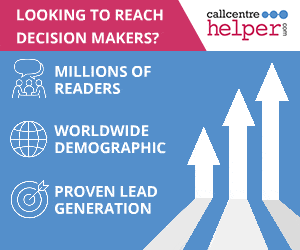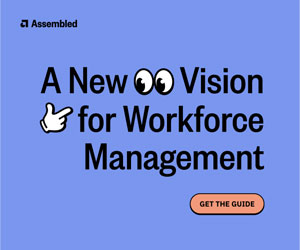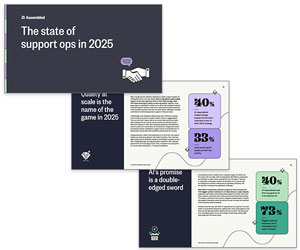Friction between agents and the Resource Planning team is not uncommon – but there are lots of things that can make the situation worse.
To find out what these are, and hopefully help our readers avoid these pitfalls, we spoke to our panel of Resource Planning experts for their first-hand experiences of where things typically go wrong.
Following Poor Processes That Compromise Daily Communication
Often, long-standing processes work against Resource Planning teams, undermining positive communication and creating friction instead.
One example of this is contact centres putting a sick line in place that is manned by the Resource Planning team. Whilst this can be seen as a more efficient process, it does little to support positive relations between agents and Resource Planning.
Firstly, the agent loses any opportunity to talk to their line manager in the first instance, and can essentially be talking to a stranger with no wider context or empathy for their personal history.
Second, whoever picks up the call in Resource Planning will likely be under pressure to keep SLAs on track that day and may already have dealt with several reported absences that morning.
When the pressure is on, their focus may very well turn to convincing the agent to come into work instead of a short and sweet “thanks for letting us know”.
Both of these can create stress and foster an “us vs. them” mindset that helps no one in the long run.
“It can get really awkward and uncomfortable for everyone involved and there’s not a Resource Planning team out there that actually wants to staff for a sick line!” – Jamie Storer, Sr Manager, Workforce Optimization at Columbia Sportswear Company
That’s not all, as issues can also arise around the process for requesting annual leave – including how quickly agents hear back and how well the reasoning is explained if the answer is no.

“When an agent requests annual leave, there will be times when the answer will inevitably need to be no, and their request will be declined. And this can create ill feeling if the answer is a blanket no with no explanation as to why.
Equally, not having a clear escalation path for agents to challenge a denied request if it’s for an exceptional event – such as a wedding – can cause issues and bad feelings to fester too.” – Matthew De Giovanni, Workforce Optimization Consultant and Co-Founder of Right Time Right Place
This can even be extended to the way Resource Planning put out requests for overtime volunteers. For example, if they are in the habit of putting out requests at 4pm, it can be a lose–lose situation, leaving agents thinking “why are they asking me at the last minute, when I’ve got no way to cover childcare at short notice?”, whilst the Resource Planning team is left feeling that no one wants to help.
It’s processes like this that can be improved with a bit of give and take on both sides, as even putting out overtime requests at a slightly earlier time of 1pm can smooth things out and improve uptake.
To find out how to turn WFM data into a compelling story and become a trusted voice, read our article: 10 Ways Resource Planners Can Make Their Voices Heard
Giving in to a Culture of “Finger-Pointing”
A good forecast is the best way to get relationships off to a strong start – but the opposite is sadly true too.

“When there are ongoing issues in forecasting, watercooler talk is going to focus on “who did the forecast for this day?” and a lot of finger-pointing. After all, if the volume forecast is off, it throws everything off.
When you’ve got calls coming in at twice the rate of what was planned, and additional factors of attendance being down layered on top, agents feel the pressure of being asked to do more work.
Over time, distrust builds from an agent perspective and it’s all too easy to point a finger at the planning team and erode any goodwill in those relationships.” – Jamie Storer, Sr Manager, Workforce Optimization at Columbia Sportswear Company
Making knee-jerk decisions based on data alone can also create problems.
“Data may very well show that Average Handling Times are increasing, or that adherence to schedule is decreasing, or even that lateness is increasing, but that’s just telling us an objective fact.
It’s not really helping us understand what the drivers are and therefore what potential intervention should occur, or what expectations may need to be set.
Jumping to conclusions can really make things worse here!” – Matthew De Giovanni, Workforce Optimization Consultant and Co-Founder of Right Time Right Place
For example, Resource Planning may see a spike in lateness across the contact centre and be tempted to encourage punitive measures as a knee-jerk reaction, whereas closer investigation could reveal that a lot of agents rely on public transport to get to work and the timetables have recently changed. Therefore, a far more considered approach would be to adjust the schedule start and finish times around the new timetables and adapt accordingly.
Micromanaging adherence can also hurt here – especially if Resource Planning teams are using “the whip” and not “the carrot”, as this can be a big source of conflict between a planning team and agents.
Sticking to “The Way It’s Always Been Done”
Doing things the way they’ve always been done can also create friction and a perception of inflexibility – particularly if you’re still following the same shift patterns you had in place when you started the role and have invited little to no agent input since.

“When agents are excluded from having any say in shift patterns, it’s a lose–lose situation, as anything Resource Planning expect to achieve in terms of efficiency is likely being undermined by people calling in sick or just leaving the operation because it’s not for them.
I’ve carried out a major shift review in the past that resulted in a 5 to 10 percent drop in attrition almost instantly because of the shifts being better for the agents working them.” – Doug Casterton, Workforce Optimization Consultant and Co-Founder of Right Time Right Place
Equally, overusing jargon can also cause misunderstandings. After all, agents don’t want to know about SLAs and attrition. They just want to know when their shift starts and ends.
What Have You Seen Destroy Relationships Between the Frontline and Your Resource Planning Teams?
Click here to join our NEW Readers Panel to share your experiences and feature in future Call Centre Helper articles.
With thanks to the following people for sharing their thoughts for this article:
- Doug Casterton, Workforce Optimization Consultant and Co-Founder of Right Time Right Place
- Jamie Storer, Sr Manager, Workforce Optimization at Columbia Sportswear Company
- Matthew De Giovanni, Workforce Optimization Consultant and Co-Founder of Right Time Right Place
For more information to help you improve your resource planning, read these articles next:
- Bad Habits That Kill Resource Planning
- Where Do WFM Systems Have the Biggest Impact?
- Why Workforce Management Deserves a Seat at the Strategy Table
Author: Megan Jones
Reviewed by: Xander Freeman
Published On: 13th Oct 2025
Read more about - Call Centre Management, Doug Casterton, Jamie Storer, Management Strategies, Matthew De Giovanni, Top Story, Workforce Management (WFM), Workforce Planning










































